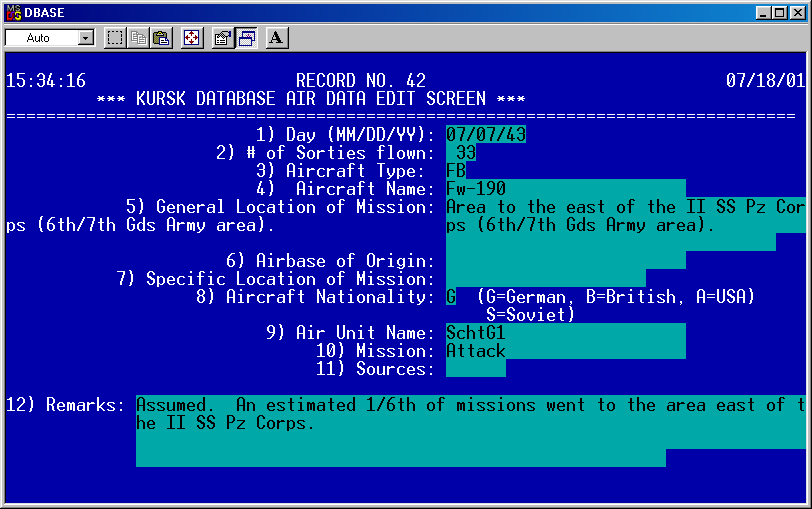
The two large campaign data bases, the Ardennes Campaign Simulation Data Base (ACSDB) and the Kursk Data Base (KDB) were designed to use for validation. Some of the data requirements, like mix of personnel in each division and the types of ammunition used, were set up to match exactly the categories used in the Center for Army Analysis’s (CAA) FORCEM campaign combat model. Dr. Ralph E. Johnson, the program manager for FORCEM was also the initial contract manager for the ACSDB.
FORCEM was never completed. It was intended to be an improvement to CAA’s Concepts Evaluation Model (CEM) which dated back to the early 1970s. So far back that my father had worked with it. CAA ended up reverting back to CEM in the 1990s.
They did validate the CEM using the ACSDB. Some of their reports are here (I do not have the link to the initial report by the industrious Walt Bauman):
https://apps.dtic.mil/dtic/tr/fulltext/u2/a320463.pdf
https://apps.dtic.mil/dtic/tr/fulltext/u2/a489349.pdf
It is one of the few actual validations ever done, outside of TDI’s (The Dupuy Institute) work. CEM is no longer used by CAA. The Kursk Data Base has never used for validation. Instead they tested Lanchester equations to the ACSDB and KDB. They failed.
But the KDB became the darling for people working on their master’s thesis for the Naval Post-Graduate School. Much of this was under the direction of Dr. Tom Lucas. Some of their reports are listed here:
http://www.dupuyinstitute.org/links.htm
Both the ACSDB and KDB had a significant air component. The air battle over the just the German offensive around Belgorod to the south of Kursk was larger than the Battle of Britain. The Ardennes data base had 1,705 air files. The Kursk data base had 753. One record, from the old Dbase IV version of the Kursk data base, is the picture that starts this blog post. These files basically track every mission for every day, to whatever level of detail the unit records allowed (which were lacking). The air campaign part of these data bases have never been used for any analytical purpose except our preliminary work on creating the Dupuy Air Campaign Model (DACM).
This, of course, leads into our next blog post on the Battle of Britain data base.
